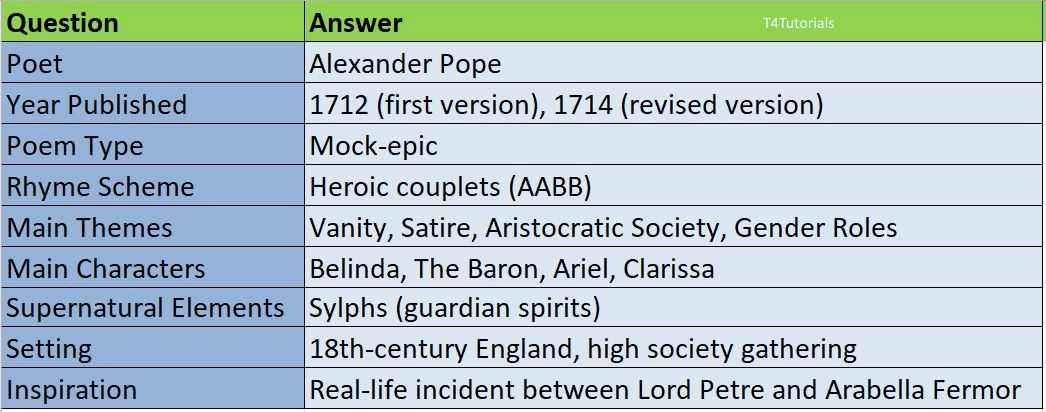Summary:
Alexander Pope’s The Rape of the Lock is a mock-heroic poem that satirizes the vanity and triviality of 18th-century aristocratic society. The poem, first published in 1712 and later revised in 1714, was inspired by a real-life incident where Lord Petre cut a lock of hair from Arabella Fermor without her consent, leading to a rift between their families.
The poem is divided into five cantos and follows Belinda, a beautiful young woman, who prepares for a social gathering. The supernatural “sylphs” protect her, but the Baron, enamored by her beauty, plots to steal a lock of her hair. During a card game at a party, he successfully cuts the lock, leading to an exaggerated conflict. Belinda is furious, and a mock-epic battle ensues. The poem ends with the lock ascending to the heavens, immortalized as a celestial object.
Pope’s work humorously critiques the superficial concerns of the aristocracy, using grand epic style to highlight the triviality of their disputes. Through satire, wit, and elegant verse, The Rape of the Lock remains a masterpiece of neoclassical poetry.

Score: 0
Attempted: 0/10
Subscribe
| Question | Answer |
| Poet | Alexander Pope |
| Year Published | 1712 (first version), 1714 (revised version) |
| Poem Type | Mock-epic |
| Rhyme Scheme | Heroic couplets (AABB) |
| Main Themes | Vanity, Satire, Aristocratic Society, Gender Roles |
| Main Characters | Belinda, The Baron, Ariel, Clarissa |
| Supernatural Elements | Sylphs (guardian spirits) |
| Setting | 18th-century England, high society gathering |
| Inspiration | Real-life incident between Lord Petre and Arabella Fermor |